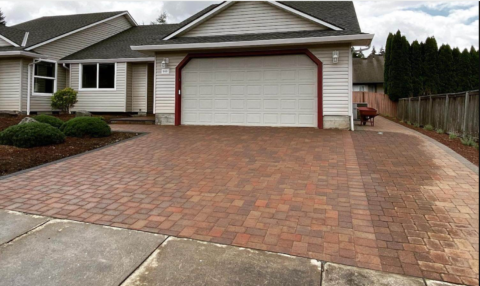People move for multiple. In cities like Fort Lauderdale, where housing costs are more than 50% higher than the national average, many residents choose to downsize to reduce housing expenses. However, although moving to a smaller space may come with lower rent and utility costs, it presents some major challenges. Downsizing from a larger home often involves difficult decisions about which belongings to keep, donate, or discard.
This guide will walk you through the essential steps to make downsizing more manageable and efficient, helping you embrace your new space with minimal stress.
1. Assess Your Needs and Prioritize
The first step to downsizing is assessing your current lifestyle and determining what you truly need in your new home. If you’re moving from a larger space, it’s time to think about what pieces of furniture you truly need and what you can easily live without. For example, if you rarely use your guest bedroom, there’s no need to replicate it in your new, smaller home.
By identifying your needs early, you’ll have a clearer picture of what to keep and what to let go of, making the entire downsizing process less overwhelming.
2. Hire Movers That Offer Storage Options
When downsizing, storage can be a lifesaver. You may have items you’re not ready to part with but don’t have space for in your new home, but Fort Lauderdale’s climate is often hot and humid, making it essential to choose storage units with climate control. Hiring a moving company in Fort Lauderdale that offers both short-term and long-term storage options with climate control features can make the process smoother and less stressful.
Climate-controlled units will protect your belongings from heat damage and mold, ensuring that items like electronics, wooden furniture, and artwork remain in good condition.
3. Start Decluttering Early
Decluttering is one of the most time-consuming parts of downsizing. Start the process early by sorting through rooms you don’t use frequently, like the attic, basement, or guest rooms. By tackling these areas first, you’ll have less to worry about when moving day approaches.
To make decluttering easier, don’t try to organize everything at once. Instead, take one step at a time. Set aside a few hours each week to go through different rooms, closets, and storage areas. This gradual approach will prevent you from feeling overwhelmed and give you time to thoughtfully decide what to keep or discard.
4. Use the One-Year Rule
Now, here’s the dilemma: you need to get rid of some items, but how do you decide what to keep and what to part from? A simple way is to apply the one-year rule. If you haven’t used something in the past year, chances are you won’t need it in your new, smaller home. This method works particularly well for clothing, kitchen items, and décor that often go unnoticed but take up valuable space.
When you apply the one-year rule, you can quickly eliminate unnecessary clutter, making the transition to your new home smoother. However, be sure to adapt the rule for seasonal items or things with sentimental value that you might want to store instead of discarding right away.
5. Sell or Donate Unwanted Items
Rather than throwing away items that are still in good condition, consider selling or donating them. This is not only environmentally friendly but also financially smart. Hosting a garage sale or listing items on online marketplaces can help you earn some extra money to offset moving expenses.
Alternatively, donating to local charities is a great way to give back to the community while clearing out your space. Many organizations even offer free pick-up services, making it even easier to offload your unwanted belongings. By donating, you can reduce clutter and feel good about helping others in the process.
6. Measure the New Space
One of the most crucial steps in downsizing is ensuring your furniture and belongings will fit in your new home. Before the move, measure each room, including doorways, hallways, and entryways. This will help you determine which furniture pieces can transition to the new space and which ones you may need to leave behind or replace.
Having accurate measurements can save you time and money. It prevents the frustration of trying to fit oversized furniture into smaller rooms. Consider creating a floor plan to visualize where each item will go. By planning in advance, you can avoid unnecessary complications and ensure a smoother moving day.
7. Invest in Multi-functional Furniture
In a smaller home, every inch counts. The best way to save space is by purchasing multi-functional furniture. Look for pieces that serve more than one purpose, such as a sofa bed for guests, a dining table with built-in storage, or a coffee table that can also be used as a desk.
Multi-functional furniture saves space and helps reduce clutter by providing additional storage. For example, ottomans with hidden compartments can store blankets, books, or other items. This approach allows you to maintain a neat, organized living space while keeping essential items within easy reach.
8. Take Advantage of Vertical Space
In a smaller home, using vertical space is key to maintaining organization and maximizing storage. Shelving units, hooks, and tall cabinets can help you keep frequently used items accessible without crowding floor space. By going vertical, you free up room for furniture and movement while still keeping your belongings organized.
For example, install shelves in the kitchen for spices, pots, or pans, and consider using hooks for mugs or utensils. In the bedroom, use tall bookshelves or storage units to keep books, clothing, or decorative items off the floor. Utilizing vertical space efficiently can make your smaller home feel much larger and more organized.
9. Embrace Minimalism
Downsizing and minimalism go hand in hand. Living in a smaller space often means focusing on quality over quantity. As you transition to your new home, aim to keep only the items that serve a purpose or bring you joy. By letting go of excess belongings, you’ll be able to create a simpler, more organized living environment.
Minimalism also means being intentional with future purchases. Instead of buying unnecessary items, consider how each new acquisition will impact your space and lifestyle. By adopting this mindset, you can keep your home clutter-free and fully enjoy the benefits of downsizing.
The Silver Lining: A Better Lifestyle
Downsizing offers more than just the practical benefits of saving money or reducing clutter; it’s a chance to embrace a lifestyle that values simplicity and intentional living. Moving to a smaller home can help you focus on what matters most, offering a fresh start and the opportunity to redefine your surroundings. Instead of seeing the process as losing space, view it as gaining clarity, freedom, and the ability to curate a home that truly fits your needs.
Passionate content writer and savvy blog publisher, Aamir crafts compelling stories and insightful articles that captivate and inform. With a knack for blending creativity and strategy, they bring fresh perspectives to every piece. Dive into their world of words and discover content that resonates.





